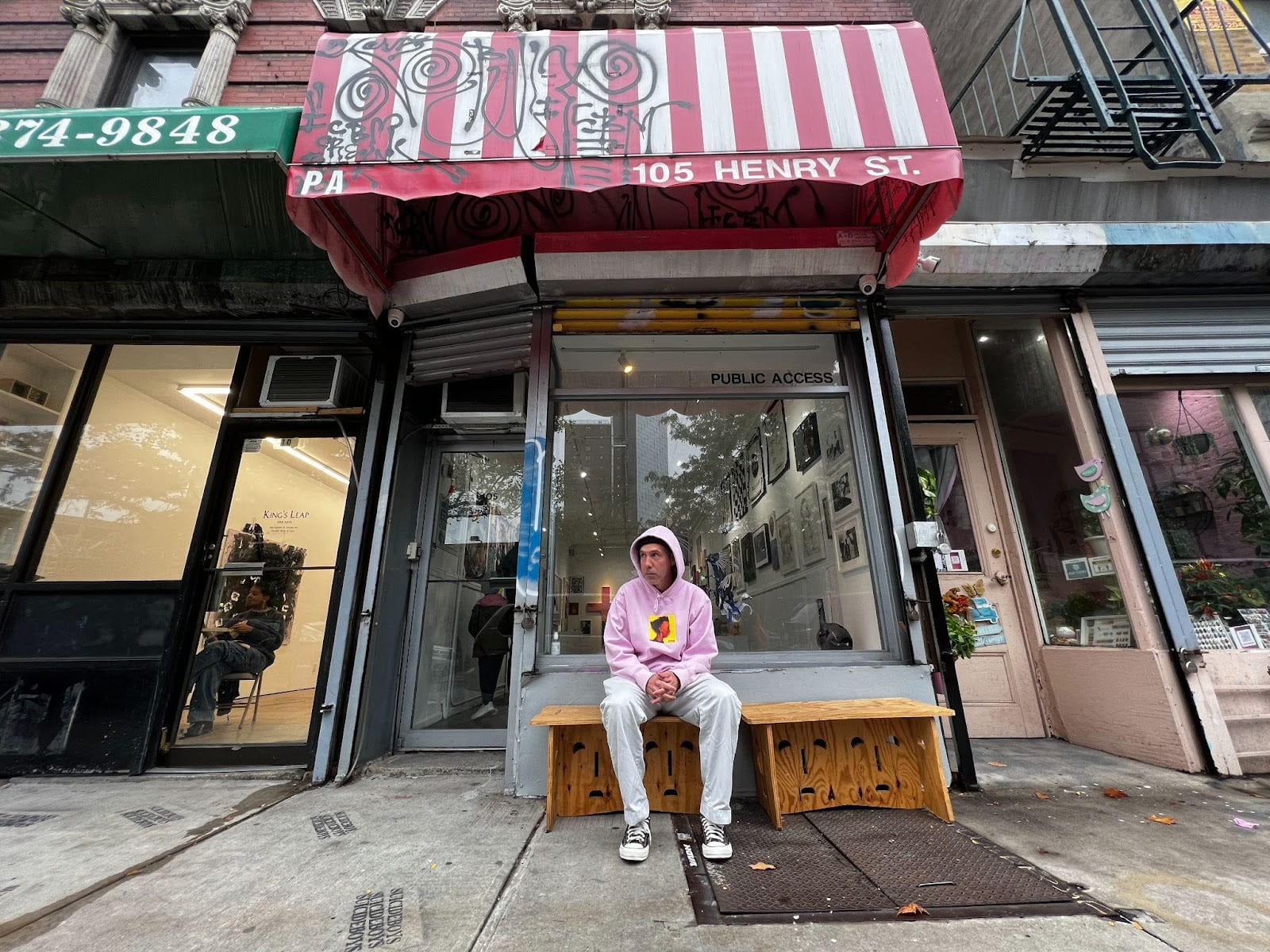Success, As Defined by a New York City Skater-Artist-Actor-Father
By Nathan Burke

On a breezy Sunday afternoon, Leo Fitzpatrick arrived via skateboard in a black hoodie and a gray beanie to his gallery on Henry Street in Two Bridges. Fitzpatrick, a former actor of the 1995 movie Kids and the TV show “The Wire,” co-directed the Marlborough Chelsea gallery before the pandemic. Fitzpatrick’s new gallery, Public Access, is located just three short blocks from the popular Coleman (LES) Skatepark and curates it around the local skateboarding scene with street art and skating-inspired works. Public Access opened about one year ago and on September 7 participated in a joint opening with several other galleries in the neighborhood. We chatted with Fitzpatrick in his gallery about opening, the neighborhood, and what it means to succeed.
Q: What’s your goal with Public Access?
A: It’s an art gallery. But I think of it as more of a community center and a space for young people to feel comfortable. And to build a community. And then the name of it is “Public Access,” which kind of says a lot. It’s for the public. The art world tends to be kind of elitist and exclusive. And I’ve seen that side. And I want to create an alternative. And so that’s what I do, in the guise of it being an art gallery. It could be a record store, it could be a skateboard shop, it doesn’t actually matter what it is. It’s just giving kids a place to come explore and ask questions.
Q: What was your motive in opening a gallery geared towards the young, countercultural community?
A: I had a gallery in Chelsea where all the big fancy galleries are. And then when the pandemic happened, I got fired from the gallery. I found a space on Saint Mark’s Place, where there’s definitely no art galleries. By finding the space on Saint Mark’s, it was like starting over. And so I was like “fuck it, I want to do a gallery for the kids who are hanging out on Saint Mark’s, because I was a kid who hung out on Saint Mark’s. I wanted to provide a place for people to go – especially young people. If you’re already like, “fuck the world,” the pandemic only exaggerated that and you’re like, “If everything can be taken away tomorrow, why do I care about a job? Why do I care about getting married? Why do I care about having kids?” and I completely understand that. And so I was like, “maybe I can give them a little break in the day, just five minutes to go somewhere to see some art.” That’s, that’s all I cared about, really.
Q: You moved out of Saint Marks after the landlord raised the rent. Why Two Bridges?
A: Cheap rent. That’s all it is. The reason I moved down here is because I knew what I could afford to lose. I’m friends with a lot of galleries down here, they were trying to get me to move down here because they knew I would bring a good crowd. There’s probably 40 galleries in this neighborhood. You might not notice them all, but they’re here. This is a destination for people who want to see art.
Q: How does being part of this gallery community on Henry Street affect this project?
A: The gallery system down here is not competitive. Everybody’s vision is so unique to themselves, that we all are able to coexist and be friends. On September 7th, we did an opening where all the galleries on the Lower East Side opened on the same night. That rarely happens. And sure enough, like 500 people came out. But for me, part of the reason I moved down here was because of the skate park. I wanted the kids from the skate park to come. You know, to me, that’s my audience, not necessarily a collector that goes to other galleries.
Q: While making money is not the objective, as a community center, how do you know you’re succeeding?
A: Every day I get to open the door is success. Every time somebody comes back to the gallery is success. The fact that potentially in ten years, my kid will bump into somebody who remembers this gallery and says, “Oh, that was cool,” that’s success. The fact that I can walk into any gallery in New York City confident. We’re on the same level. That’s success. I think being able to walk around with your head held high is success. For me, it’s like, every time a young skater kid comes back to the gallery, that’s why I do it. The fact that they came in and they felt comfortable enough to keep coming back, that’s what’s up. That’s what’s important. Because I was that skater kid when I was a teenager.
This interview was edited for clarity and content.

